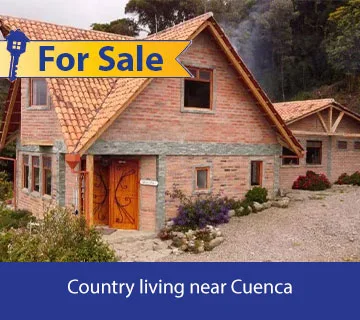To reduce violence, some South American countries consider legalizing drugs and reducing penalties
The agricultural output of Uruguay includes rice, soybeans and wheat. Soon, though, the government may get its hands dirty with a far more complicated crop — marijuana — as part of a rising movement in this region to create alternatives to the United States-led war on drugs.
Uruguay’s famously rebellious president first called for “regulated and controlled legalization of marijuana” in a security plan unveiled last month. And now all anyone here can talk about are the potential impacts of a formal market for what Ronald Reagan once described as “probably the most dangerous drug in America.”

“It’s a profound change in approach,” said Sebastián Sabini, one of the lawmakers working on the contentious proposal unveiled by President José Mujica on June 20. “We want to separate the market: users from traffickers, marijuana from other drugs like heroin.”
Across Latin America, leaders appalled by the spread of drug-related violence are mulling policies that would have once been inconceivable.
Decriminalizing everything from heroin and cocaine to marijuana? The Brazilian and Argentine legislatures think that could be the best way to allow the police to focus on traffickers instead of addicts.
Legalizing and regulating not just drug use, but also drug transport — perhaps with large customs fees for bulk shipments? President Otto Pérez Molina of Guatemala, a no-nonsense former army general, has called for discussion of such an approach, even as leaders in Colombia, Mexico, Belize and other countries also demand a broader debate on relaxing punitive drug laws.
Uruguay has taken the experimentation to another level. United Nations officials say no other country has seriously considered creating a completely legal state-managed monopoly for marijuana or any other substance prohibited by the 1961 United Nations Single Convention on Narcotic Drugs.
Doing so would make Uruguay the world’s first marijuana republic — leapfrogging the Netherlands, which has officially ignored marijuana sales and use since 1976, and Portugal, which abolished all criminal penalties for drug use in 2001. Here, in contrast, a state-run industry would be born, created by government bureaucrats convinced that opposition to marijuana is simply outdated.
“In 1961, television was just black and white,” said Julio Calzada, secretary general of Uruguay’s National Committee on Drugs. “Now we have the Internet.”
But kicking the prohibitionist habit, it turns out, is no easy task. Even here in a small, progressive country of 3.3 million people, the president’s proposal has hit a gust of opposition. Doctors, political rivals, marijuana users and security officials have all expressed concern about how marijuana would be managed and whether legalization, or something close to it, would accelerate Uruguay’s worsening problem of addiction and crime.
Mr. Mujica, 78, a bohemian former guerrilla who drives a 1981 Volkswagen Beetle, seems to be surprised by the response. He said this month that if most Uruguayans did not understand legalization’s value, he would suspend his plan while hammering out the details and building public support. But this is a defiant leader who spent more than a decade in jail as a political prisoner, so even as he discussed postponement, he signaled that he might not be willing to give up, emphasizing that drug users “are enslaved by an illegal market.”
“They follow the path to crime because they don’t have the money,” he said, “and they become dealers because they have no other financial means to satisfy their vice.”
His government, which has a slim majority in Parliament, is moving forward. One of the president’s advisers said this month that draft legislation would be submitted within a few weeks, and Mr. Calzada, among many others, has been hard at work. His desk is covered with handwritten notes on local drug markets. A career technocrat with the long, wispy hair of an aging rocker, he said he had been busy calculating how much marijuana Uruguay must grow to put illegal dealers out of business. He has concluded that with about 70,000 monthly users, the haul must be at least 5,000 pounds a month.
“We have to guarantee that all of our users are going to be able to get a quality product,” he said.
He added that security would be another challenge. Drug cartels protect their product by hiding it and with the ever-present threat of violence. Uruguayan officials, including Mr. Sabini — one of several lawmakers who openly admits to having smoked marijuana — favor a more neighborly approach. They imagine allowing individuals to cultivate marijuana for their own noncommercial use while professional farmers provide the rest by growing it on small plots of land that could be easily protected.
The government would also require users to sign up for registration cards to keep foreigners away — an idea influenced by a new policy in the Netherlands, which restricts marijuana sales to residents — and to track and limit Uruguayans’ purchases (to perhaps 40 joints a month, officials say). Finally, there would be systems set up to regulate the levels of THC, the active ingredient in marijuana, and levy taxes on producers, relying for enforcement on the agencies regulating tobacco, alcohol and pharmaceuticals.
Officials acknowledge that by trying to beat kingpins like the Mexican Joaquín Guzmán, known as Chapo, at their own game, Uruguay would need to co-opt old foes and join forces with the same drug aficionados it has been sending to jail for years.
That means cozying up to people like Juan Vaz. A thin, dark-haired computer programmer and father of three who is perhaps Uruguay’s most famous marijuana activist, Mr. Vaz spent 11 months in prison in a few years ago after being caught with five flowering marijuana plants and 37 seedlings. In an interview, he compared marijuana to wine, and expressed both interest and alarm at the government’s plans. He said he was pleased to see the Mujica administration tackle the issue, but like many others, he said he feared government control. Personal marijuana use is already decriminalized in Uruguay, so Mr. Vaz, 45, said the idea of a registry for producers and users amounted to an Orwellian step backward. “We’re concerned about the violation of privacy,” he said.
Other growers and smokers, who spoke on the condition that they were not fully identified, appeared more eager to take part. Martín, 26, a bearded programmer whose closet full of marijuana plants added a unique aroma to his apartment complex, said his friends had been talking about starting a small marijuana farm.
Gabriel, 35, a dealer and user who lives downtown, said that he welcomed a legal market and hoped it would hamper the darker side of the drug business. He said that he had been selling marijuana on and off for 15 years — moving a little more than two pounds a month — and that the people he bought from had often pressured him to take on more dangerous drugs like cocaine paste, a cracklike substance that has spread wildly through the region since 2001.
“Pasta base,” as it is called here, is generally blamed for Uruguay’s recent rise in drug addiction and violent crime, and Mr. Mujica has said that legalizing marijuana would break the cycle of addiction and delinquency that begins when users become dealers.
Many in the drug treatment community have their doubts. “You’re never going to get rid of the black market,” said Pablo Rossi, director of Fundación Manantiales, which runs several residential treatment centers in Montevideo.
But Gabriel said that big dealers would inevitably adapt. The question is: for good or ill? Maybe they would start selling cocaine cheaper, he said, causing more problems. Or maybe they would be pushed out of the drug business entirely. For now, at least, they mostly seem to be afraid of change: he said a kilogram of marijuana (2.2 pounds) now costs about $470 in Uruguay, up from around $375 before the legalization proposal was announced.
“They are trying to make as much money as they can,” Gabriel said. “They think legalization is imminent.”
Credit: By Damon Cave, The New York Times, www.nytimes.com; photo caption: marijuana grows in a closet in Uruguay.


















